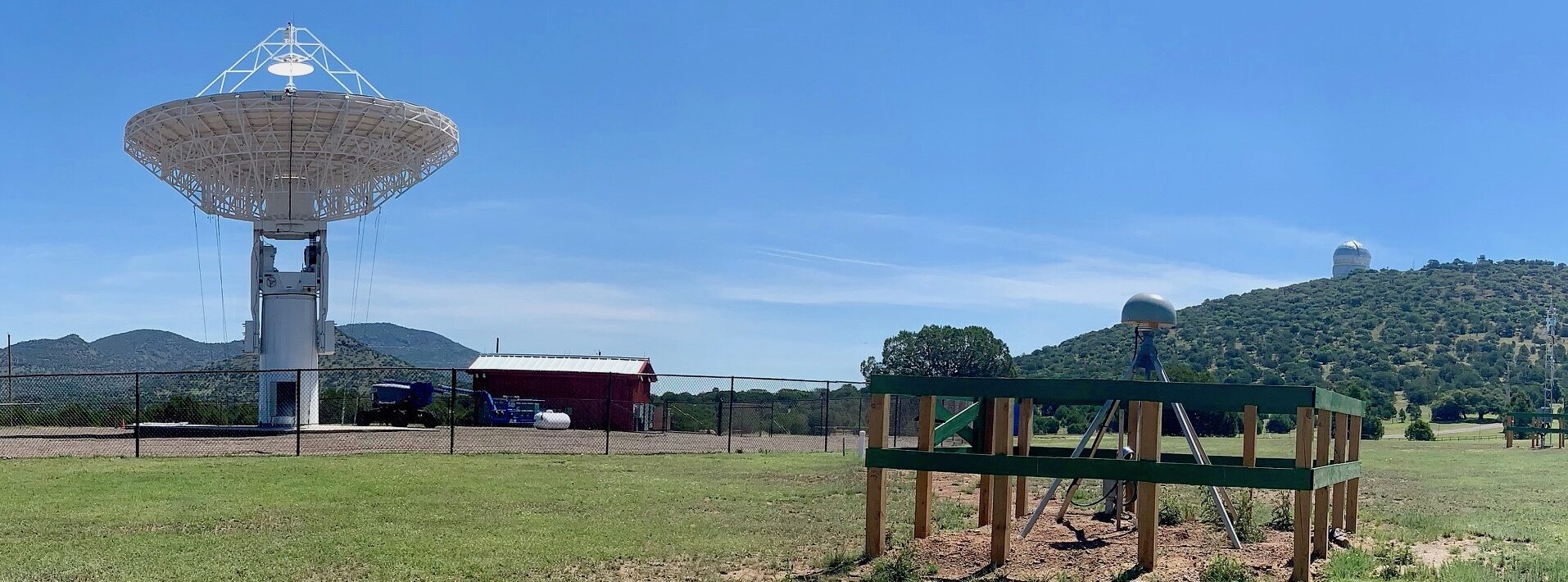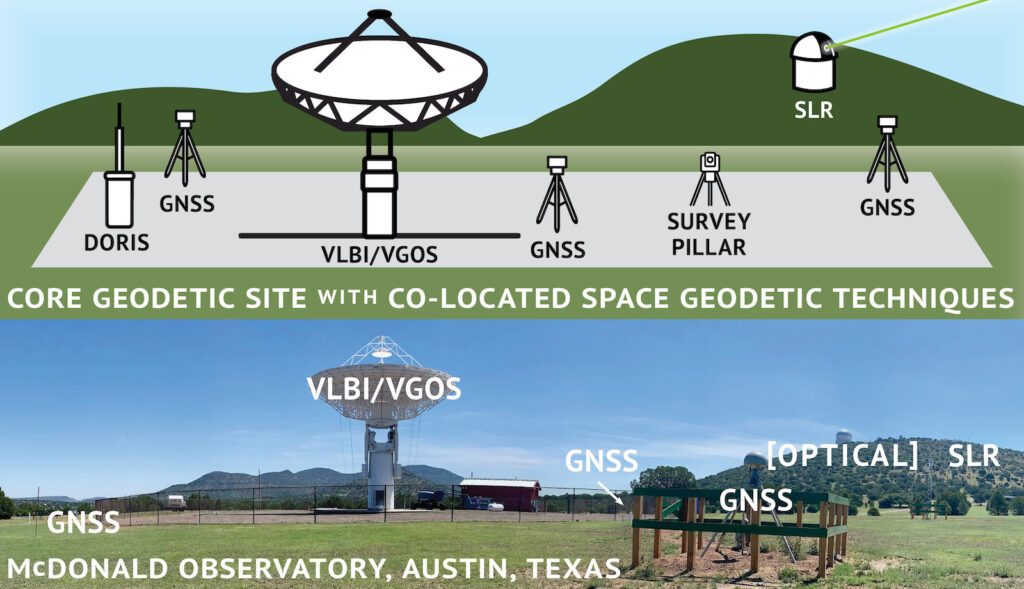
Co-located techniques and atmospheric ties
An accurate and stable global reference frame is essential to obtain high-precision satellite-based geophysical measurements which enhances our ability to observe and interpret the minute variations of the earth’s dynamic system. Reference frames are geocentric systems of coordinates that serve as extremely precise universal standards.
The development of the new global terrestrial reference frame, ITRF2020, is underway. The new ITRF is expected to incorporate a number of improvements in the data analysis of contributing space geodetic techniques (i.e., VLBI, SLR, GNSS, and DORIS) such as SLR range bias and VLBI antenna deformation.

The new ITRF (ITRF2020) will also attempt to improve how technique products are combined in order to reduce the scale discrepancy between VLBI and SLR and obtain accurate annual geocenter motion. Improvements at the combination level are particularly needed at core geodetic sites for the ITRF to meet the GGOS positioning accuracy goal of 0.1 mm. Currently, tie discrepancies at core sites, or sites where several of these geodetic techniques are collocated, remain at more than 5 mm for 60% of the sites—the goal is to improve this amount.
In this project, we are developing a method that incorporates constraints from atmospheric structure that could improve the accuracy of relative position estimates and ITRF combinations. This is particularly essential—combining technique-specific geodetic solutions—as many core sites are already operational.